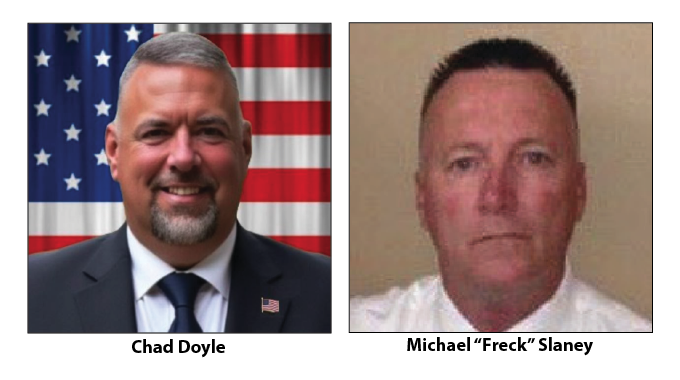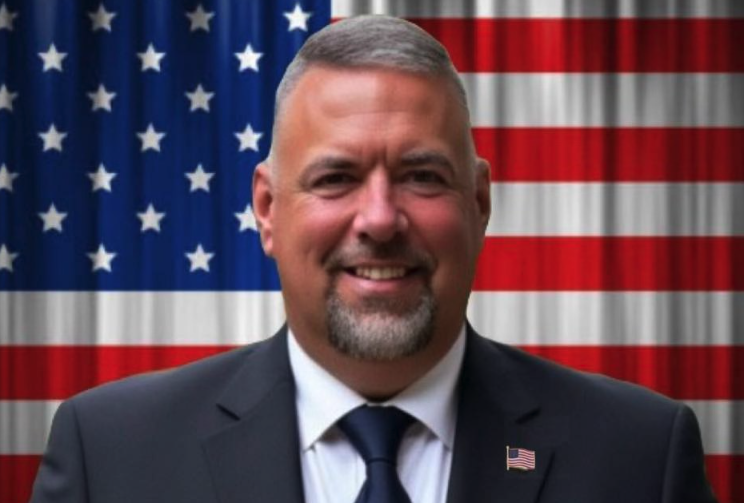Israel strikes Iran’s nuclear sites and kills its top generals. Iran retaliates with missile barrage
Published 2:33 pm Friday, June 13, 2025

- An explosion is seen during a missile attack in Tel Aviv, Israel, Friday, June 13, 2025. (AP Photo/Tomer Neuberg)
DUBAI, United Arab Emirates — Israel launched blistering attacks on the heart of Iran’s nuclear and military structure Friday, deploying warplanes and drones previously smuggled into the country to attack key facilities and kill top generals and scientists — a barrage it said was necessary before its adversary got any closer to building an atomic weapon.
Iran retaliated by unleashing scores of ballistic missiles on Israel late Friday, with explosions flaring in the skies over Jerusalem and Tel Aviv and shaking buildings below.
“Don’t think that they hit and it’s over. No. They started the work and started the war,” Iran’s Supreme Leader Ayatollah Ali Khamenei said in a recorded message. “We will not allow them to escape safely from this great crime they committed.”
Trending
An Associated Press reporter saw smoke rising in Tel Aviv after an apparent missile strike. Israeli paramedics reported a handful of injuries in the Tel Aviv area.
Israel’s ongoing airstrikes and intelligence operation and Iran’s retaliation raised fears of all-out war between the countries and propelled the region, already on edge, into even greater upheaval.
Israel had long threatened such a strike, and successive American administrations had sought to prevent it, fearing it would ignite a wider conflict across the Middle East and possibly be ineffective at destroying Iran’s dispersed and hardened nuclear program.
But a confluence of developments triggered by Hamas’ Oct. 7, 2023, attack — plus the reelection of U.S. President Donald Trump — created the conditions that allowed Israel to finally follow through on its threats. Israeli Prime Minister Benjamin Netanyahu said the U.S. was informed in advance of the attack.
On Thursday, Iran had been censured by the U.N.’s atomic watchdog for not complying with obligations meant to prevent it from developing a nuclear weapon.
Countries in the region condemned Israel’s attack, while leaders around the globe called for immediate deescalation from both sides.
Trending
The U.N. Security Council scheduled an emergency meeting for Friday afternoon at Iran’s request. In a letter to the council, Iran’s Foreign Minister Abbas Araghchi called the killing of its officials and scientists “state terrorism” and affirmed his country’s right to self-defense.
Israel’s military said about 200 aircraft were involved in the initial attack on about 100 targets. Its Mossad spy agency positioned explosive drones and precision weapons inside Iran ahead of time, and used them to target Iranian air defenses and missile launchers near Tehran, according to two security officials who spoke on condition of anonymity.
It was not possible to independently confirm the officials’ claims.
Among the key sites Israel attacked was Iran’s main nuclear enrichment facility in Natanz, where black smoke could be seen rising into the air. It also appeared to strike a second, smaller nuclear enrichment facility in Fordo, about 100 kilometers (60 miles) southest of Tehran, according to an Iranian news outlet close to the government that reported hearing explosions nearby.
Israel said it struck a nuclear research facility in Isfahan, too, and said it destroyed dozens of radar installations and surface-to-air missile launchers in western Iran. Iran confirmed the strike at Isfahan.
Israel military spokesman Brig. Gen. Effie Defrin said the Natanz facility was “significantly damaged” and that the operation was “still in the beginning.”
The first wave of strikes had given Israel “significant freedom of movement” in Iran’s skies, clearing the way for further attacks, according to an Israeli military official who spoke on condition of anonymity because he was not authorized to discuss details of the attack with the media.
The official said Israel is prepared for an operation that could last up to two weeks, but that there was no firm timeline.
Among those killed were three of Iran’s top military leaders: one who oversaw the entire armed forces, Gen. Mohammad Bagheri; one who led the paramilitary Revolutionary Guard, Gen. Hossein Salami; and the head of the Guard’s ballistic missile program, Gen. Amir Ali Hajizadeh.
Iran confirmed all three deaths, significant blows its governing theocracy that will complicate efforts to retaliate. Khamenei said other top military officials and scientists were also killed.
Netanyahu said the attack had been months in the making. In a video statement sent to journalists Friday, he said he ordered plans for the attack last November, soon after the killing of Hassan Nasrallah, the leader of Hezbollah in Lebanon, one of Iran’s strongest proxies. Netanyahu said the attack was planned for April but was postponed.
In its first response Friday, Iran fired more than 100 drones at Israel. Israel said the drones were being intercepted outside its airspace, and it was not immediately clear whether any got through.
Israel’s military said it called up reservists and began stationing troops throughout the country as it braced for further retaliation from Iran or Iranian proxy groups.
Trump urged Iran on Friday to reach a deal with the U.S. on its nuclear program, warning on his Truth Social platform that Israel’s attacks “will only get worse.”





